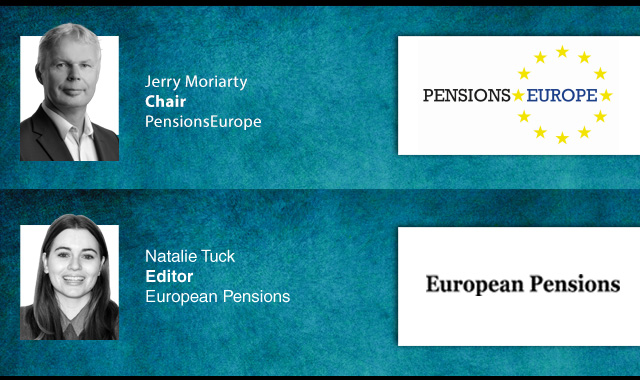Lithuanian Investment and Pension Funds Association (LIPFA) CEO, Dr. Tadas Gudaitis, discusses the potentially damaging impact that the government’s proposed pension reforms could have
In recent weeks, Lithuania’s Ministry of Social Security and Labour (SADM) has unveiled legislative proposals that, in our view, could destabilise the country’s pension system for years to come.
While any pension reform should aim to improve long-term adequacy and sustainability, the current proposals appear to be driven by short-term political motives. Among the most concerning elements are a 21-month opt-out window from second pillar pension funds, the possibility to suspend contributions indefinitely, and the abolishment of auto-enrolment (AE). If adopted, these changes could unravel over two decades of pension reform progress.
The most damaging of these would be the mass opt-out opportunity from the second pillar, scheduled to run from January 2026 to September 2027. Allowing individuals to withdraw their savings without qualifying reasons not only undermines the principle of long-term accumulation but also contradicts the Constitutional Court’s recent interpretation that such withdrawals must be tied to “serious reasons,” such as disability or terminal illness.
The potential consequences are significant. Independent estimates from the Bank of Lithuania suggest that if 40–60 per cent of savers were to exit the system, up to €3.4 billion could be withdrawn – most of it likely directed toward consumption. This would trigger short-term macroeconomic distortions, including a spike in inflation and a temporary rise in GDP, followed by long-term pressure on public finances and replacement rates.
Estonia has already walked this path. When similar changes were introduced in 2021, nearly 40 per cent of participants withdrew from the system, weakening both pension adequacy and trust in long-term saving. Notably, Estonia’s system includes a 4 per cent state top-up – more generous than Lithuania’s 1.5 per cent – yet it still experienced mass withdrawals.
If Lithuania follows the same course, those who remain in the system will also suffer. Smaller fund volumes would reduce investment diversification and return potential. And as pension adequacy declines, pressure on first pillar (state) benefits would increase, likely forcing future governments to raise taxes or social contributions.
LIPFA strongly believes that AE has played a critical role in strengthening participation and coverage since its introduction in 2019. OECD data supports this: Countries with automatic or mandatory systems consistently achieve participation rates above 70 per cent, while those without struggle to reach even 40 per cent. Removing AE now would be a step backwards – particularly given Lithuania’s worsening demographic outlook.
In its March 2025 communication on the Savings and Investment Union, the European Commission encouraged member states to expand AE and further develop supplementary pension systems. These mechanisms are not only crucial for ensuring retirement security, they also help mobilise long-term capital to support innovation, infrastructure, and even defence spending across the EU.
In our response to SADM and Lithuania’s key institutions, LIPFA has proposed more balanced adjustments: Retaining AE but reducing its frequency, making contribution suspension temporary and limited in scope, and improving participant communication through employers.
Pensions policy must not be reactionary. It requires long-term commitment and continuity. As Europe doubles down on sustainable finance and pension adequacy, Lithuania should not become an exception.
Latest News
-
Swedish AP Funds report mixed results; consolidation work remains 'on track'
-
Danish funds report record profit; mental health concerns continue to grow
-
Irish school secretaries and caretakers launch strike over pension inequalities
-
I&P Denmark welcomes climate adaptation focus in Finance Act proposal
-
News in brief: 29 August 2025
-
Sweden’s AP2 reports modest returns amid market volatility
Podcast: Stepping up to the challenge

In the latest European Pensions podcast, Natalie Tuck talks to PensionsEurope chair, Jerry Moriarty, about his new role and the European pension policy agenda
Podcast: The benefits of private equity in pension fund portfolios

The outbreak of the Covid-19 pandemic, in which stock markets have seen increased volatility, combined with global low interest rates has led to alternative asset classes rising in popularity. Private equity is one of the top runners in this category, and for good reason.
In this podcast, Munich Private Equity Partners Managing Director, Christopher Bär, chats to European Pensions Editor, Natalie Tuck, about the benefits private equity investments can bring to pension fund portfolios and the best approach to take.
In this podcast, Munich Private Equity Partners Managing Director, Christopher Bär, chats to European Pensions Editor, Natalie Tuck, about the benefits private equity investments can bring to pension fund portfolios and the best approach to take.
Mitigating risk
BNP Paribas Asset Management’s head of pension solutions, Julien Halfon, discusses equity hedging with Laura Blows
© 2019 Perspective Publishing Privacy & Cookies








Recent Stories